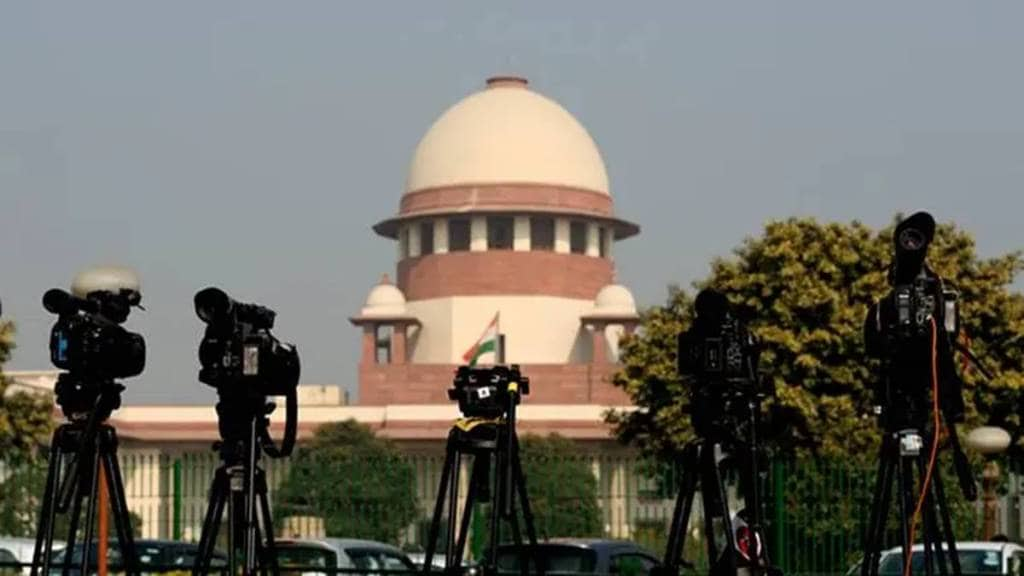The Centre is considering promulgating an Ordinance to ensure that the recent Supreme Court judgment upholding the state governments’ power to tax mineral rights and mineral-bearing lands will be effective only prospectively, sources privy to the matter told FE. The government moved the Supreme Court on July 31 seeking the judgment’s prospective application, citing its “substantial and far-reaching” implications. The court has reserved its decision.
In the meantime, the Centre is considering various options as it apprehends that the ruling’s retrospective effect could increase the tax burden on the employment-intensive sector which, it believes, is on the cusp of an investment binge. On July 25, in an 8-1 majority verdict, a nine-judge Constitution Bench headed by Chief Justice D Y Chandrachud affirmed the power of states to levy royalty on the extraction of minerals from their land and said they can also tax the lands which comprise mines and quarries.
“Retrospective effect to the order could lead to a financial emergency because many sectors that are dependent on minerals will be severely impacted. Given this scenario, the government may be compelled to issue an executive order to make relevant changes in the law to make it prospective,” an official aware of the deliberations in the government told FE.
These newly affirmed taxation rights for the states will be over and above the royalty and other levies already applicable on minerals. The states’ royalty revenue from mining surged 300% between FY17 and FY22. Coupled with high bid premiums, the taxes already jack up the cost to as high as the initial sale value of the resources in many cases, analysts say. The prospect of more levies to be imposed by the states could lead to a further rise in prices of minerals, ranging from coal and iron ore to deep-seated base metals, and could trigger an inflationary spiral across user industries.
Besides, the apex court’s ruling could have a bearing on a host of petitions being considered by various high courts where mining companies challenged the levy of Goods and Services Tax (GST) and service tax on mineral royalties. If the petitions are resolved in the government’s favour, the industry would face big tax liabilities from previous operations.
Until now, every mining lease holder needed to pay a royalty to the state concerned for major minerals removed or consumed as per the royalty rates specified in the Second Schedule of the Mines and Minerals (Development and Regulation) Act, 1957 by the Centre.According to sources, subject to the final SC ruling, an Ordinance may be issued after the ongoing Parliament session. Another official said that high-level meetings are going on in the matter and a final call is yet to be taken. “Poor policy predictability is a big problem in the country,” the second official said.
States such as Rajasthan and Madhya Pradesh backed the prospective application of the judgment, while Uttar Pradesh and Jharkhand were for retrospective application.Solicitor General Tushar Mehta had told the SC bench that “a preliminary estimate of the potential financial impact of the judgment due to past state levies which may become due (in the form of additional state levies of taxes, interest and penalties) on the public sector units engaged in mining, and in production activities dependent on minerals (like power production), is Rs 70,000 crore”. It was also apprehended that many companies, including PSUs, could go bankrupt if they were to pay arrears going back to 35 years.
Mehta said “the impact” of the ruling “will be felt in the market for every mineral and by extension in every one of the core sectors of the economy. Virtually, every industry critical to the infrastructure sector (power, steel, cement, aluminium, etc.) is heavily dependent on minerals whose pricing regime will be governed by the judgment”.
He said, “The effect of the judgment is to significantly raise the price of an essential input/raw material and therefore substantially raise the price in the hands of the final consumers served by these core industries, namely, the average citizen.” This would create a significant inflationary impact, he added. The judgment is a positive for mineral-rich states such as Jharkhand, Odisha, Chhattisgarh, Karnataka, West Bengal, and Rajasthan. These states will be able to raise funds for state development activities. This would also encourage competition among states to attract miners.
“However, for the broader metals and minerals industry, a retrospective decision will increase the cost of business ultimately leading to an inflationary impact. There is also a possibility that industries in non-mineral bearing states may consider importing minerals (if commercially attractive on a landed cost basis), thereby impacting several other parameters,” said Rakesh Surana, partner, Deloitte India.

